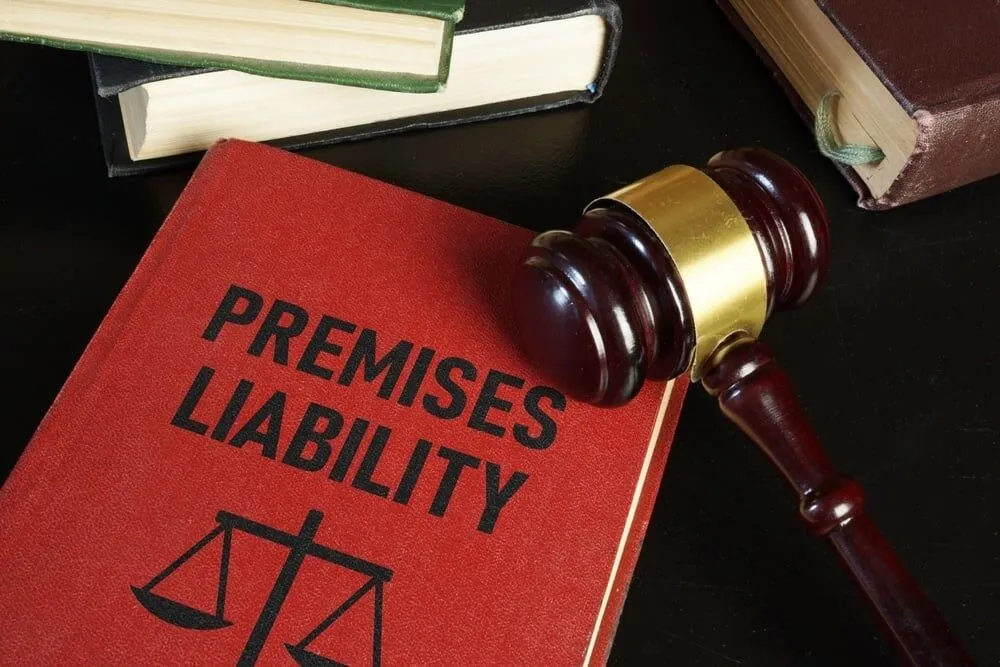ABSTRACT –
The enhanced new law brought by the present ruling government replaces the substantive and procedural laws that have been over decades in our country. There have been significant changes to the law of the land. Claiming that rather than Indian citizens, the Indian Penal Code of 1806 was designed to protect the interests of the British government. The present paper respects both the existing Bharatiya Nyaya Sanhita Bill that was put forth in the Lok Sabha on August 1 and the long-standing law. Does proposing a new law change society by instilling fear? Does enacting or upholding the proposed law bring about change? It is safe to say that the Indian penal code of the colonial era was not lenient towards crimes committed by citizens. Still, government officials lacked the enforcement of the thoroughly codified law. The bill’s main goal is to give women and children top priority because they are the targets of the most heinous crimes and the ones whose bodies are tortured.
INTRODUCTION –
The Bharatiya Nyaya Sanhita Bill, which will replace the IPC, will have 356 sections rather than the previous 511, with 175 sections amended, 8 new sections added, and 22 sections repealed. Union Home Minister Amit Shah presented the current bill on Friday, August 11. The home minister has stated that “the colonial-era laws were meant to protect that state and its subjects, while the proposed changes are meant for deterrence and ensuring justice to the victim. Justice delivery will be central to new legal architecture” The bill’s 356 amendments state that murder shall take prominence over crimes against the state, crimes against women, and crimes against children. Additionally, the news, for the first time, covers the scope of offences related to organised terrorism. The Sanhita aims to eliminate antiquated and redundant provisions, add new offences, and strengthen the penalties for some crimes. The Sanhita also makes an effort to simplify and clarify the language used in the law. The substantial question of law that arises now is whether the 8 new sections that have been added to the bill bring us to the objective of the paper. i.e. Whether any new offences are created which don’t exist now?
In the administration of criminal justice, Penal Code, 1860 (IPC) can be said to be a substantive law relating to crimes while the Criminal Procedure Code can be explained as procedural law. In every advanced society, specific acts (omissions) are termed as unsuitable, wrong or untrue.
It offers a scheme to punish wrongdoers and to safeguard society. Punishments range from fines to imprisonment, and in certain cases, even the death penalty.
The most notable changes requested to be introduced by virtue of the Bill comprise of the combination of particular provisions of the IPC to make it more brief (356 sections as contrasted to 511 sections in the IPC); and introducing particular new offences for example hate speech and terrorism while re-portraying revolution as acts jeopardizing the dominion, unity and morality of India. When a great Supreme Court lawyer can give a speech of the general opinion of the bar in classifying that the bewilderment and indecision caused by a huge mass of decisions and principles is turning to be worse from year to year,’ it is inexorable that numerous conflicting attitudes toward this science should take the place of a prior casual acceptance. When the Supreme Court Advocates become engrossed in an effort to carry out their duty as ” officers of the court” their aims become blurred, and it is tough to tell what they are doing or even what they are aiming to do. Such efforts, actually restricted to public meetings, result in speeches.
FEATURES OF THE BILL
- Maximum death penalty for offences like gang rape and mob lynching
- provisions that one of the penalties for minor offences is to perform community service for the first time.
- Provision for in-absentia trials of fugitives from justice
- Additionally, the bill adds new offences like endangering India’s sovereignty, unity, or integrity or engaging in acts of secession or armed rebellion.
CHANGES MADE
Sedition- The codified law deals with sedition under section 124A, which states.—Whoever by words, either spoken or written, or by signs, or by visible representation, or otherwise, brings or attempts to bring into hatred or contempt, or excites or attempts to excite disaffection towards, 13 the Government established by law in 14[India], 15 shall be punished with 16[imprisonment for life], to which fine may be added, or with imprisonment which may extend to three years, to which fine may be added, or with fine.[2]
This offence has been prescribed the punishment of 3 years plus the added fine. In comparison with the BNS bill, the term “sedition” has been removed, and the introduction of a new section that deals with “Acts endangering sovereignty, unity and integrity of India given under section 150 of the seventh chapter of the bill “of offences against the state” which states
Whoever, purposely or knowingly, by words, either spoken or written, or by signs, or by visible representation, or by electronic communication or by use of financial means, or otherwise, excites or attempts to excite, secession or armed rebellion or subversive activities, or encourages feelings of separatist activities or endangers sovereignty or unity and integrity of India; or indulges in or commits any such act shall be punished with imprisonment for life or with imprisonment which may extend to seven years and shall also be liable to fine[3]
The primary distinction is that the Indian penal code governs these offences through various sections and punishments, making it much more convoluted. In contrast, the BNS bill has a wider angle for convicting the offence—the insignificant amount of punishment change. Nothing is different because both punishments include a life sentence.
Criminal conspiracy –
Indian penal code defines criminal conspiracy under section 120, stating an agreement between two or more persons to commit an illegal act or a legal act by illegal means. The section also prescribes the punishment for criminal conspiracy, which varies depending on the nature and severity of the offence that is the object of the conspiracy.
The bill has made changes to the definition and punishment under section 61-
When two or more persons agree to do or cause to be done–– (a) an illegal act; or (b) an act which is not illegal by illegal means, such an agreement is designated a criminal conspiracy: Provided that no agreement except an agreement to commit an offence shall amount to a criminal conspiracy unless some act besides the agreement is done by one or more parties to such agreement in pursuance thereof. Explanation. —It is immaterial whether the illegal act is the ultimate object of such agreement or is merely incidental to that object. (2) Whoever is a party to a criminal conspiracy,–– (a) to commit an offence punishable with death, imprisonment for life or rigorous imprisonment for a term of two years or upwards, shall, where no express provision is made in this Sanhita for the punishment of such a conspiracy, be punished in the same manner as if he had abetted such offence; (b) other than a criminal conspiracy to commit an offence punishable as aforesaid shall be punished with imprisonment of either description for a term not exceeding six months, or with fine or with both.

The punishment prescribed by the Indian penal code for the offence is life imprisonment or either description for a term not exceeding six months, or with a fine or with both. No difference can be drawn, but the BNS also introduces a new section, Section 120, which addresses intentionally causing bodily harm or great bodily harm when provoked. According to this section, anyone who intentionally causes harm or great harm to another person on their own grave or sudden provocation shall be punished with imprisonment for a term that may not exceed three years, a fine, or both.
CHEATING
Section 316 of the new Sanhita, which defines cheating more precisely and proportionately, replaces Section 420. According to the kind and degree of harm done to the victim, Section 316 distinguishes between various cheating degrees.
The maximum sentence for cheating under Section 316 is seven years, which is identical to the maximum sentence under Section 420, but the minimum sentence is now six months instead of one year.
The removal of Section 420, which deals with deceit and coercing the delivery of property, is one of the significant changes. This section has been extensively used and abused in India, frequently for pointless or frivolous reasons.
The major crimes of history have also been replaced with this new bill, i.e., Rape and murder, not denigrating the fact that the bill has given prominence to the offence against women and children, which is governed by sections 63 to 97. Sexual offences separately have been of major importance.
RAPE
The legal definition and sanction for rape have been modified in the proposed Sanhita, which seeks to replace the Indian Penal Code of 1860. However, it also kept some contentious elements of the previous legislation.
Rape is defined in Section 63 of the proposed Sanhita as acts of sexual activity carried out without the consent or will of the woman. According to the proposed Sanhita, rape is punishable by a minimum of 10 years in prison, with the possibility of a life sentence, as well as a fine. The penalty must be fair and reasonable to cover the victim’s medical and rehabilitation costs.
MURDER
Murderers are subject to the following penalties, as stated in IPC Section 302: “Whoever commits murder shall be punished with death or imprisonment for life and shall also be liable to fine.”
Section 302 of the proposed Sanhita defines the crime of “Snatching” in the proposed BNS, 2023. According to Section 302(1), “Theft is “snatching” if the offender suddenly, quickly, or forcibly seizes, secures, grabs, or takes away any moveable property from any person or his possession in order to commit theft.”
Murder is covered by Section 99 of the proposed Sanhita, which distinguishes between culpable homicide and murder.
Punishment for murder is laid down in Section 101, which has two sub-sections.
- According to Section 101(1), “Whoever commits murder shall be punished with death or imprisonment for life and shall also be liable to fine.”
- The proposed Section 101(2) According to Sanhita, “When a group of five or more persons acting in concert murders on the basis of race, caste or community, sex, place of birth, language, personal belief, or any other ground, each member of such a group shall be punished with death or with imprisonment for life or with imprisonment for a term which shall not be less than seven years and shall also be liable to fine.”
- The term “murder by a group,” which includes lynching, is used in Section 101(2).
According to Section 307, a person who attempts to kill another person with the intent or knowledge to do so and in a way that would constitute murder if they succeeded faces up to ten years in prison and a fine. If the attempt results in harm to the victim, the offender will either receive a life sentence in prison or the previously mentioned punishment.
Section 307 of the proposed Sanhita outlines the definition of robbery as a crime and its associated punishment. The proposed Sanhita’s Section 107, which also outlines the punishment for the crime, includes a provision for attempted murder.
The bill altered the long-standing law that dealt with heinous crimes. These are just a few of the numerous amendments that the bill in the Lok Sabha has suggested. We have established the requirement that the conviction rate be taken to be above 90% in accordance with this Bill. According to Amit Shah, it will be required in every situation where a law specifies a sentence of seven years or more in prison that a forensic team visits the crime scene. Contact Us for more information.
CONCLUSION
The law enforced, and the bill to be enforced have certain objectives that will benefit society in every possible way. The statements made by the home minister may not be the absolute perspective of the codified law. Since the Indian penal code 1908 has been sentencing the guilty which the given substantive and procedural laws. In the view of a generic opinion, it is not for the law to be changed or to be made more stringent or for the procedure to be speedy. The conventional structure of well-written law is unquestionably sufficient to run a nation. The question is whether the judiciary has ever adequately implemented the legislature after it has been drafted. Where does the law prevail on the land? In a nation like India, the intent behind a bill to prioritise crimes against women and children is very broad, partly because of the incorrect interpretation of our nation’s traditions and customs. It is commendable that the current
government has implemented notable modifications with this new legislation, but right now, it must keep a promise to the citizens who are in need.
- Casemine.com/judgement/in/575fd361607dba63d7e6e044
- https://prsindia.org/files/bills_acts/bills_parliament/2023/Bharatiya_Nyaya_Sanhita,_2023.p df




